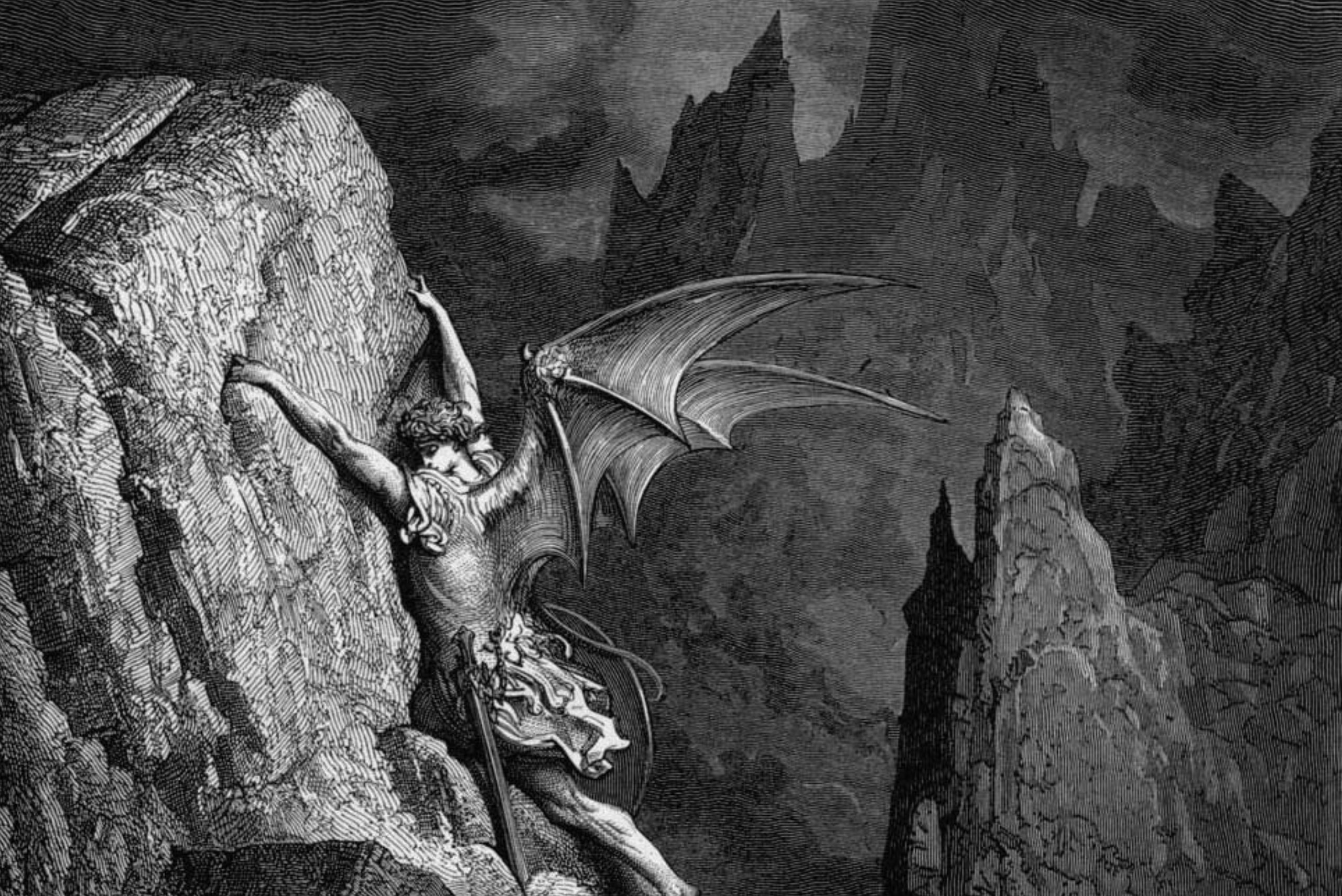There was this guy who got sent to prison. On his first day, he was given some prison-issue clothes, some prison-issue shoes, a prison-issue toothbrush, a prison-issue comb, and a prison-issue joke book.
That first night, as he lay in his bunk after lights-out, he heard someone call out, “Forty-seven!” and the cell block rang with laughter. Someone else yelled, “Seventy-two!” and again everybody howled laughing.
The new prisoner asked his cell-mate what was going on, and the crusty old lifer said, “By now we’ve all memorized the prison-issue joke book, so instead of telling jokes, we just tell the numbers of the jokes as they appear in the joke book. It saves a lot of time.”
Eager to make friends, the new prisoner clicked on his prison-issue flashlight and thumbed through his prison-issue joke book looking for a joke to tell. “I’ve got one!” he called out. “Thirteen!”
Silence. From the bunk below he heard his old cell-mate sigh. “Some people just don’t know how to tell a joke,” he said.
The preceding is a joke about the misuse of symbolism. I offer it here because a couple of readers of The Habit have asked me about symbols; a reader named Teresa asked how to use symbolism “without sounding preachy or cliched.”
I’m not going to be able to say all I have to say about symbolism in one letter, so you can expect a return to this topic in the future. But let’s start where Teresa started: with preachiness and cliche. Preachiness and cliche both shortcut the process by which we communicate meaning. If I say someone is “beaming with a smile that stretches from ear to ear,” I am simply offering you an old formula that means something like “this person was very happy.” That formula keeps both the writer and the reader from having to work (or think) to convey or receive meaning. More to the point, it keeps both writer and reader from having to experience meaning.
In much the same way, preachiness reduces meaning to a formula, or an algebra problem. I’m not up for a full discussion of preachiness this morning, but let me just say that when it comes to storytelling, making sure everybody learns their lesson is not a very good way to ensure that everybody learns their lesson. In storytelling, preachiness is often a failure of faith: I insert meaning into a story when I can’t quite believe that the meaning is already there.
The numbers from the prison-issue joke book are symbols. But they can’t do the work of the jokes they represent, because a joke is an experience. A clumsy symbol–a symbol imposed from outside the narrative experience–is about as effective as a number from a joke book. It reduces meaning rather than intensifying it. The shortcut can’t get you there; you have to go the long way around.
A well-conceived symbol, on the other hand, is a gift to the reader. And since we’re less than a week away from Flannery O’Connor’s birthday (if she were still alive, she’d turn ninety-three next Sunday, March 25)–and since nobody has been better at symbolism than she was–let’s look to her for instruction.
A good symbol, Flannery O’Connor argued, is not imported from outside the story but rather grows from within.
In good fiction, certain of the details will tend to accumulate meaning from the action of the story itself, and when this happens they become symbolic in the way they work.
Notice that verb become. Details become symbolic as a result of the action of the story. That’s a very different thing from dropping symbols into a story from the outside. In “Good Country People,” the main character, Joy-Hulga, has a wooden leg. It functions first as a wooden leg, but as the story continues it accumulates meaning and by the end is clearly a symbol.
Early in the story, we’re presented with the fact that Joy-Hulga is spiritually as well as physically crippled. She believes in nothing but her own belief in nothing, and we perceive that there is a wooden part of her soul that corresponds to her wooden leg. Now of course this is never stated. The fiction writer states as little as possible. The reader makes this connection from things he is shown. He may not even know that he makes the connection, but the connection is there nevertheless and it has its effect on him.
When, at the end of the story, a satanic Bible salesman steals the wooden leg, the reader is well aware that he is carrying away not just a wooden leg, but a dead and hollow soul. And there is hope that Joy-Hulga will get a living soul in its place, for, as O’Connor says, the devil “is always accomplishing ends other than his own.”
The wooden leg works as a symbol only because it first works as a wooden leg.
In “A Good Man Is Hard to Find,” the serial killer known as The Misfit wears a black hat, a fact that a symbol-hunter might find pretty interesting. In one of her letters O’Connor talked about a run-in with one of these symbol-hunters at one of her readings:
There were a couple of young teachers there and one of them, an earnest type, started asking the questions. “Miss O’Connor,” he said, “why was the Misfit’s hat black?” I said most countrymen in Georgia wore black hats. He looked pretty disappointed. Then he said, “Miss O’Connor, the Misfit represents Christ, does he not?” “He does not,” I said. He looked crushed. “Well, Miss O’Connor,” he said, “what is the significance of the Misfit’s hat?” I said it was to cover his head; and after that he left me alone.
Surely O’Connor was conscious of the symbolic potential of a black hat on a bad guy, wasn’t she? I should think she was. But there are other black hats in O’Connor’s body of work that decidedly don’t signify bad guys; and no matter how good a character was (though good guys are thin on the ground in O’Connor’s stories) I couldn’t imagine her putting a white hat on one unless she had reason that such a man might wear a white hat in the world God made.
So what is the difference between Joy-Hulga’s wooden leg and the Misfit’s black hat? There is no “conventional” symbolism in a wooden leg. Any symbolism attached to Joy-Hulga’s wooden leg is earned through the narrative. The connection between black hats and bad men, on the other hand, is entirely conventional. I suspect that the conventionality of that symbol–you might say its cliched nature–explains why O’Connor was so uninterested in talking about the black hat.
I need to bring this thing in for a landing, but I do want to take just a minute to talk about the use of conventional symbols in a story. Consider the wedding ring. It is a perfectly conventional sign. Somewhere along the way, people decided that a ring on the finger next to the pinkie of the left hand (the right hand in some places) signifies that a person is married. I’ve heard preachers at weddings say that the ring is a circle, and circles have no beginning or end, and that’s why the ring is an appropriate symbol of married love. But that’s just reverse engineering on the preacher’s part. A wedding ring is an entirely arbitrary sign (and a highly useful one, I might add–at least as useful as a stop sign, another arbitrary and very useful sign). If you didn’t already know what a wedding ring was, you could stare at one for ten years and never guess that it signifies holy matrimony. (Unlike, say, smoke, which is a natural sign of fire, or red and yellow leaves, which are a natural sign of autumn).
So if a character in a story takes off his wedding ring, does that symbolize marriage trouble? Even when you’re working with a symbol as fraught with meaning as a wedding ring, the true nature of that symbol still depends on the narrative. If your character takes his ring off because he has poison ivy, that’s not a very effective symbol of marriage trouble. If, on the other hand, your character takes off his wedding ring because he’s in a hotel bar and is hoping to meet single women, that act of removing the ring has begun to accumulate meaning that can make for an effective symbol of marriage trouble.
As I said earlier, I’ve got more to say about symbolism, but it’s time to get this letter in the mail. More later.







